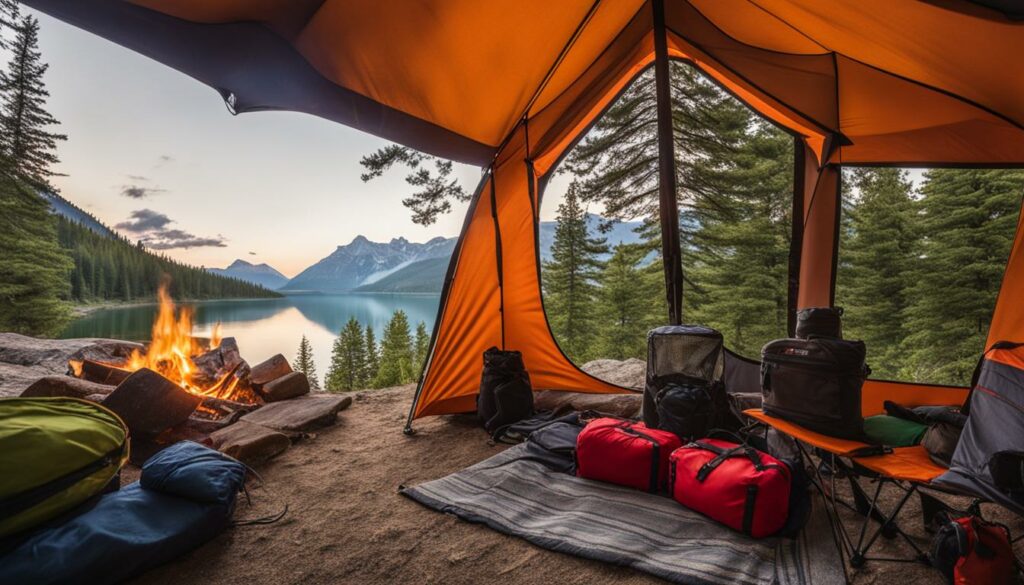Uncategorized
Camping Safety: Essential Tools for Every Camper
Camping is a wonderful way to disconnect from the hustle and bustle of daily life and immerse yourself in nature. However, to ensure that your outdoor adventures are both enjoyable and safe, it’s crucial to be prepared with the right tools. From fire-starting tools to first-aid kits, having the right camping safety gear can make all the difference in an emergency or unexpected situation.
In this guide, we’ll cover the essential safety tools every camper should pack to make sure you’re ready for anything while exploring the great outdoors.
1. First-Aid Kit
A well-stocked first-aid kit is one of the most important safety tools for any camper. Whether you’re hiking through rugged terrain, climbing, or simply enjoying a campfire, accidents can happen. Having the right supplies on hand can help you treat minor injuries and prevent more serious issues.
What to Include in Your First-Aid Kit:
- Bandages (various sizes)
- Gauze pads and adhesive tape
- Antiseptic wipes and ointments
- Tweezers (for splinters or ticks)
- Pain relievers (e.g., ibuprofen)
- Burn cream or gel
- Scissors
- An emergency whistle
- Antihistamines (for allergic reactions)
- Snake bite kit (if you’re camping in areas with snakes)
- A list of emergency contacts and your health insurance information
Make sure to customize your first-aid kit based on any specific needs or conditions you might have (such as epinephrine for severe allergies). Also, regularly check the kit for expired items and replenish it before each trip.

2. Fire Starting Tools
Campfires are a central part of many camping experiences—whether for cooking, warmth, or light. However, lighting a fire in the wilderness requires the right tools, especially in wet or windy conditions.
Essential Fire Starting Tools:
- Waterproof Matches or Lighter: A reliable, waterproof match or lighter is a must-have. Look for a windproof lighter if you plan to camp in breezy conditions.
- Firestarter Kit: Firestarter kits can help you get a flame even in damp conditions. Options like cotton balls soaked in petroleum jelly or magnesium fire starters are compact and effective.
- Tinder and Kindling: Always have dry tinder (like small twigs, paper, or dry grass) and kindling to help start the fire before you add larger logs.
Be sure to follow safety guidelines when building and extinguishing fires, and only build fires in designated areas to prevent wildfires.

3. Headlamp or Flashlight
A headlamp or flashlight is vital for navigation at night or during low-light conditions. The wilderness can be dark, and you’ll need a reliable light source to safely move around camp or signal for help in an emergency.
Headlamp vs. Flashlight:
- Headlamp: A headlamp frees up your hands for other tasks, making it ideal for cooking, setting up tents, or walking at night. Choose a model with adjustable brightness levels and long battery life.
- Flashlight: If you prefer a handheld option, a flashlight with a strong beam and durable design is essential. Consider LED flashlights for maximum energy efficiency.
Remember to bring extra batteries or a portable power bank to ensure your light source stays functional throughout your trip.

4. Multi-Tool or Survival Knife
A versatile multi-tool or survival knife is a must-have when camping. Whether you need to cut rope, open cans, or perform minor repairs, a multi-tool can help in various situations. Survival knives are also useful for chopping wood or preparing food, and they can be crucial in emergency survival situations.
What to Look for in a Multi-Tool:
- A blade for cutting and slicing
- Pliers for gripping and bending
- Screwdrivers (flathead and Phillips)
- Can and bottle openers
- Scissors or tweezers
Choose a tool that is durable, lightweight, and compact, so you can easily carry it without adding unnecessary weight.
5. Water Filtration System
Clean water is essential for survival, but finding a reliable water source in the wilderness may not always be easy. Carrying a water filtration system ensures that you can safely drink from lakes, rivers, or streams.
Types of Water Filtration Systems:
- Water Filters: Portable water filters can quickly remove bacteria and protozoa from water, making it safe to drink. Popular options include pump filters, squeeze filters, and gravity filters.
- Water Purification Tablets: For backup, water purification tablets can be a lightweight and compact option to kill harmful pathogens in water.
- Boiling Water: If you have access to a campfire, boiling water for at least one minute can also purify it.
Make sure you know how to properly use your filtration system and have enough supplies for your entire trip.
6. Compass or GPS Device
While modern smartphones can help with navigation, it’s always a good idea to carry a traditional compass or a dedicated GPS device when you venture into the wilderness. These tools can help you find your way back to camp if you get lost or disoriented.
Types of Navigation Tools:
- Compass: A simple, lightweight tool that doesn’t rely on batteries. Be sure you know how to use a compass with a map for orienteering.
- GPS Device: A more high-tech option that provides real-time location information. Some models have topographic maps, tracking, and emergency alert systems, though they require batteries or recharging.
Even if you plan to rely on your phone for navigation, be sure to pack a backup device in case your phone battery runs out.
7. Emergency Shelter
In the event of unexpected weather changes or if you get lost, an emergency shelter can provide critical protection.
Emergency Shelter Options:
- Tarp or Emergency Blanket: A tarp can be used to create a quick shelter in case of rain or wind. Emergency space blankets, which are compact and lightweight, can help keep you warm in cold weather.
- Bivy Sack: If you’re caught without a tent, a bivy sack (a small, weatherproof sack) provides minimal protection from the elements while you wait for rescue or regroup.
Having an emergency shelter provides peace of mind knowing you have a quick solution if things go awry.
8. Whistle and Signaling Devices
In case of an emergency, you may need to signal for help. A loud whistle is a simple but effective tool to get the attention of others if you’re lost or in distress. Many whistles are designed to be heard from long distances and work even in challenging weather conditions.
Other Signaling Devices:
- Signal Mirror: A signal mirror reflects sunlight to attract attention from rescuers or nearby hikers.
- Emergency Flares: In some cases, an emergency flare can help signal distress to people or aircraft in the area.
Ensure your whistle or signaling device is easily accessible, ideally attached to your gear or backpack.
9. Insect Repellent and Sunscreen
Insects and harsh sun can make your camping experience uncomfortable or even dangerous if not addressed properly. Insect repellent will protect you from bites that could cause infections or transmit diseases, while sunscreen helps prevent sunburns and protects your skin from UV rays.
Sunscreen and Insect Repellent Tips:
- Sunscreen: Choose a broad-spectrum sunscreen with SPF 30 or higher. Apply it generously to exposed skin and reapply throughout the day, especially after swimming or sweating.
- Insect Repellent: Look for repellent with DEET or natural alternatives like citronella to keep mosquitoes and other insects at bay. Apply to exposed skin and clothing.
These two items are essential for protecting your health during outdoor activities.
10. Rope or Paracord
Rope is a versatile tool that can be used in various camping situations. Whether you’re securing your tent, building a shelter, or tying down equipment, having sturdy rope or paracord on hand is essential. It’s lightweight, easy to pack, and incredibly useful in emergencies.
Uses for Rope:
- Setting up tarps or shelters
- Securing food out of reach from animals
- Creating makeshift splints for injuries
- Securing gear or tools to backpacks
A 50-foot section of paracord is compact but provides plenty of length for most needs.
Conclusion
Safety should always be a top priority when camping, and the right tools can make a significant difference in ensuring your trip goes smoothly. By packing essential tools such as a first-aid kit, fire-starting equipment, a headlamp, and a water filtration system, you can enjoy peace of mind knowing that you are prepared for any situation. Stay safe, stay prepared, and make the most of your time in the great outdoors!

